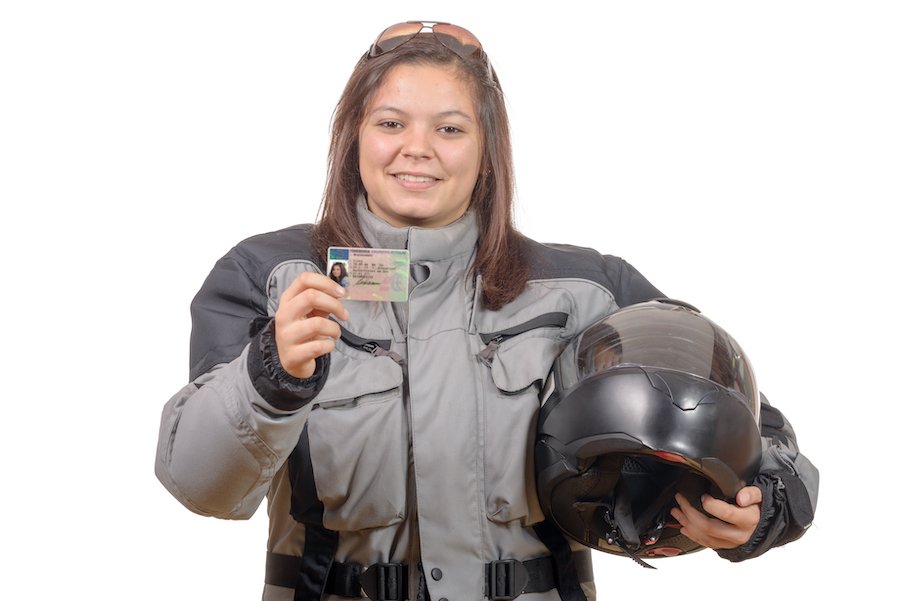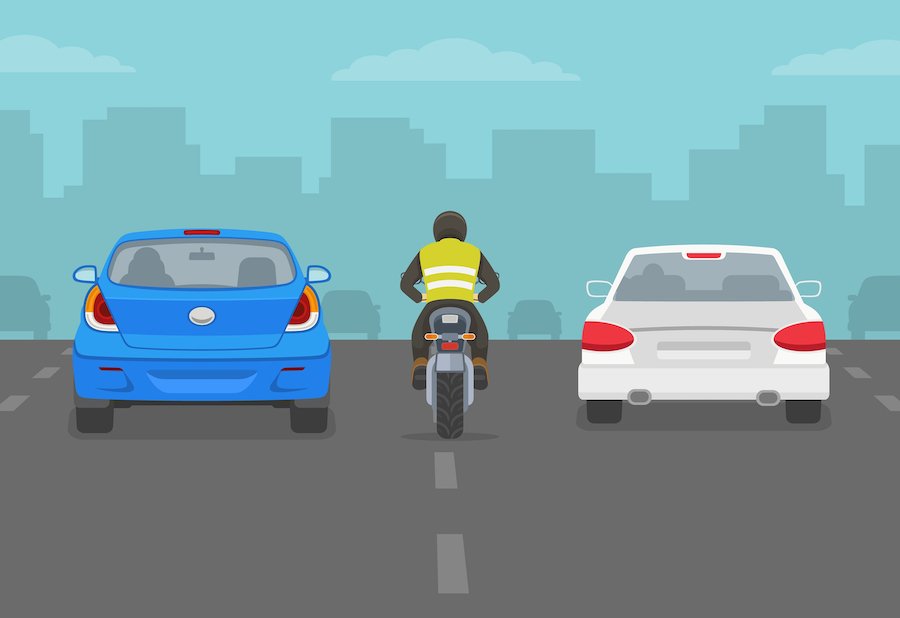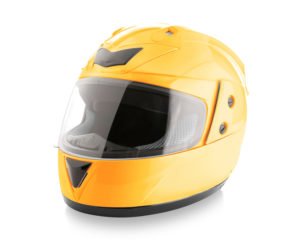
Under Nevada motorcycle accident law, you may have a claim for damages if you are injured on your motorcycle. Depending on the circumstances, you can sue for:
- negligence (if the other driver was being careless) and/or
- strict products liability (if the motorcycle was defective).
Most personal injury claims resolve through negotiation and without a trial. Either way, you are far more likely to recover high financial settlements if you are represented by competent attorneys who are experienced in dealing with stubborn insurance defense firms.
Most importantly, do not admit fault following a motorcycle accident. Also do not claim you are uninjured. You could be wrong, and your words could come back to haunt you in a lawsuit.
In this article, our Nevada personal injury lawyers discuss how to file a motorcycle lawsuit in Nevada as well as the state’s most important motorcycle laws. Scroll down to learn:
- 1. How do I file a motorcycle accident lawsuit in Nevada?
- 2. Who is at fault in most motorcycle accidents?
- 3. How long do I have to sue?
- 4. What damages can I get?
- 5. What if I was partially to blame?
- 6. What are the requirements for motorcyclists in Nevada?
- 7. How common are motorcycle accidents?
- Additional Resources
1. How do I file a motorcycle accident lawsuit in Nevada?
Before filing a lawsuit, you (through your attorneys) would contact the liable parties in an effort to settle the matter outside of court. Most cases settle through negotiation alone since neither side is anxious to commit to the time and expense of a trial.
Should negotiations fail, you would then file a civil lawsuit in the relevant court. Typically, lawsuits can be filed in the jurisdiction where:
- the collision actually occurred, or
- the motorcycle manufacturer is incorporated (if you are suing the manufacturer).

NRS 486.041 defines “motorcycle” as vehicles with a seat and saddle for the driver and no more than three wheels.
2. Who is at fault in most motorcycle accidents?
Depending on the case, you may be able to sue the following parties following a motorcycle accident:
- the driver who caused the accident
- the manufacturer of the motorcycle (if it was defective)1
- any mechanics who worked on the motorcycle (if their actions caused the motorcycle to malfunction)
- the manufacturer of the motorcycle helmet (if it was defective)
- the city or county (such as if poor road maintenance contributed to the crash)
- the at-fault motorist’s parents, if the driver was a minor2
Often, defendants with the deepest pockets are motorcycle manufacturers, such as Yamaha and Honda.
3. How long do I have to sue?
In general, you have a two-year statute of limitations after you discover your accident injuries to bring a personal injury negligence action against the at-fault driver(s).3

Nevada requires motorcyclists to have a class M license by the Department of Motor Vehicles (DMV).
4. What damages can I get?
If you were harmed in a motorcycle collision, you may be entitled to recover money to pay for your:
- Medical bills (including rehab and counseling),
- Lost wages,
- Pain and suffering (non-economic damages),
- Vehicle-repair service bills, and/or
- Funeral expenses and loss of probable support (in wrongful death cases)
If the case goes to trial, you can also ask for punitive damages if the defendant may have acted in a malicious or particularly reckless way. Punitive damages are often much larger than compensatory damages.4
5. What if I was partially to blame?
Under Nevada’s modified comparative negligence laws, you may still recover damages if you were no more than 50% at fault in causing a motorcycle crash.5 Your payout would just be reduced in proportion to your percentage of fault.

Lane splitting is not allowed under Nevada motorcycle laws.
6. What are the requirements for motorcyclists in Nevada?
License and Registration
Firstly, you need a class M license to drive a motorcycle in Nevada. You can obtain one by either:
- Transferring your out-of-state motorcycle license to Nevada (within 30 days of moving to Nevada);
- Passing a knowledge test, skills test, and vision test at the Nevada DMV; or
- Completing a Motorcycle Safety Course certified by the Motorcycle Safety Foundation.
As with cars, you must register your motorcycle with the Nevada DMV.
Helmets
To operate a motorcycle in Nevada, you must wear goggles or a face shield if there is no windscreen on the motorcycle. You also must wear a helmet that meets NHTSA and U.S. Department of Transportation (DOT) standards, including:
- A weight of three pounds at least;
- At least one inch of firm polystyrene foam as an interior liner;
- External parts that do not stick out more than .2 inches;
- Chin straps; and
- a DOT label.
Failing to wear a motorcycle helmet is a civil infraction carrying a fine and two DMV demerit points. It is actually unlawful in Nevada to sell helmets that do not meet DOT standards.
Motorcycle Equipment
In addition, the motorcycle itself must be equipped with the following:
- Horn (audible from 200 feet);
- Muffler;
- Wheel fenders (front and fear);
- Turn signals (front and back and visible from 500 feet);
- Brakes (front and back);
- One to two headlights;
- Rear-view mirrors (at least three inches wide) on the handlebars (with the handgrips below shoulder-level);
- Passenger footrests behind the driver that are adjustable;
- A rear-mounted reflector, at least 20 inches high, and visible in low beam lights from no less than 300 feet away;
- USDOT-approved tires;
- Brake lights visible from no less than 300 feet away at any time of day; and
- Red taillight that is visible from no less than 500 feet away at any time of day.
Insurance
In Nevada, motorcycle owners are required to carry the following insurance coverage at a minimum:
- $25,000 for bodily harm or fatality for one person in any one incident;
- $50,000 for bodily harm or fatality for at least two people in any one incident; and
- $20,000 for property damage in any one accident.
(This 25/50/20 minimum is the same amount of insurance coverage Nevada law requires for cars.)
Rules of the Road
Finally, Nevada motorcyclists must abide by the same rules of the road as automobile drivers. In addition:
- Motorcyclists can ride in the carpool or HOV lanes without passengers;
- Motorcyclists can go through red lights only if the sensors failed to detect them for two cycles, and the intersection is clear;
- Lane splitting is illegal, but motorcycles can ride side-by-side in the same lane.6
Note that DUI on a motorcycle is punished the same as DUI in a passenger car, and penalties increase for each successive DUI conviction (in seven years). In addition to carrying fines and possibly jail, getting a DUI can cause your license to be suspended.
Learn more about Nevada motorcycle laws and motorcycle helmet laws (NRS 486.231).
7. How common are motorcycle accidents?
Although accidents involving cars are near all-time lows according to the Centers for Disease Control (CDC), deaths from motorcycle accidents have never been higher.
In 2021 alone, motorcycle accidents accounted for 84 deaths in Nevada and 5,932 deaths nationwide. In Nevada, 19 of the victims had an illegal blood alcohol content, and nine of them were not wearing helmets.7
Common serious injuries from motorcycle accidents include:
- broken bones
- contusions
- burn injuries
- disfigurement
- organ damage
- traumatic brain injury
- spinal injuries
- other catastrophic injuries

Protective headgear is also required on mopeds and trimobiles even though they have two or less gross brake horsepower and go no faster than 30 mph.
Additional Resources
For more in-depth information, refer to these scholarly articles:
- The Helmet Law in Nevada: How to Hassle Harley Riders – San Diego Law Review.
- Products Liability: Motorcycle Design-The Outer Limits of Crashworthiness – Stetson Law Review.
- Factors associated with crash severities in built-up areas along rural highways of Nevada: A case study of 11 towns – Journal of Traffic and Transportation Engineering.
- Motorcycle Helmet Laws: The Facts, What Can Be Done to Jump-Start Helmet Use, and Ways to Cap Damages – Journal of Health Care Law & Policy.
- Helmetless Motorcyclists–Easy Riders Facing Hard Facts: The Rise of the Motorcycle Helmet Defense – Ohio State Law Review.
Legal References
- See also Andrews v. Harley Davidson, Inc., (1990) 106 Nev. 533, 537, 796 P.2d 1092, 1095 (“A manufacturer has a duty to design a reasonably crashworthy vehicle. Huddell v. Levine, 537 F.2d 726, 737 (3d. Cir. 1976). In regard to the crashworthiness of a vehicle, once a court or jury determines that a design defect exists misuse precludes recovery only when the plaintiff misuses the product in a manner in which the defendant could not reasonably foresee. See Hughes v. Magic Chief, Inc., 288 N.W.2d 542, 545 (Iowa 1980). Negligent driving of a vehicle is a foreseeable risk against which a manufacturer is required to take precautions. Ford Motor Co. v. Hill, 404 So.2d 1049, 1052 (Fla. 1981). Specifically, it is foreseeable that a plaintiff, who is intoxicated, will drive negligently and get in an accident since intoxication leads to a significant number of accidents yearly. Therefore, evidence of Andrews’ intoxication is not relevant to whether a design defect in his motorcycle was the proximate cause of his injuries.”).
-
Zugel v. Miller, (1984) 100 Nev. 525, 527, 688 P.2d 310, 312 (“A second possible theory of liability in this case is that of ‘negligent entrustment’ of a motor vehicle. Under this doctrine, a person who knowingly entrusts a vehicle to an inexperienced or incompetent person, such as a minor child unlicensed to drive a motor vehicle, may be found liable for damages resulting thereby.”).
- NRS 11.190(4)(e).
- NRS 42.005.
- NRS 41.141.
- NRS 486.231. NRS 486.241. NRS 486.331; NRS 486.341. NRS 486.351 (“A person, except a police officer in the performance of his or her duty, shall not drive a motorcycle or moped between moving or stationary vehicles occupying adjacent traffic lanes.”).
- Traffic Safety Facts, 2021 Data, National Highway Traffic Safety Administration (NHTSA).

